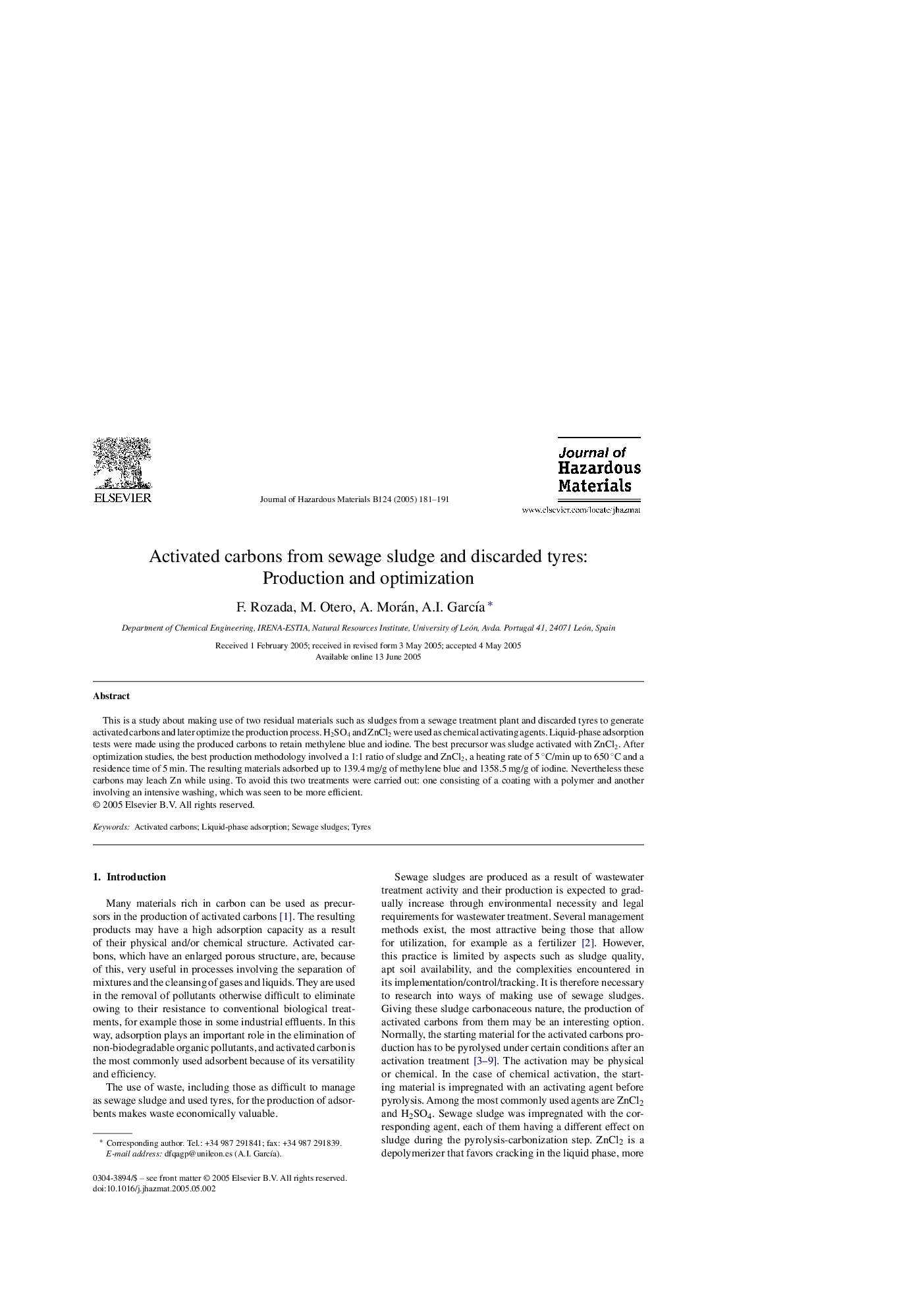| Article ID | Journal | Published Year | Pages | File Type |
|---|---|---|---|---|
| 9674177 | Journal of Hazardous Materials | 2005 | 11 Pages |
Abstract
This is a study about making use of two residual materials such as sludges from a sewage treatment plant and discarded tyres to generate activated carbons and later optimize the production process. H2SO4 and ZnCl2 were used as chemical activating agents. Liquid-phase adsorption tests were made using the produced carbons to retain methylene blue and iodine. The best precursor was sludge activated with ZnCl2. After optimization studies, the best production methodology involved a 1:1 ratio of sludge and ZnCl2, a heating rate of 5 °C/min up to 650 °C and a residence time of 5 min. The resulting materials adsorbed up to 139.4 mg/g of methylene blue and 1358.5 mg/g of iodine. Nevertheless these carbons may leach Zn while using. To avoid this two treatments were carried out: one consisting of a coating with a polymer and another involving an intensive washing, which was seen to be more efficient.
Related Topics
Physical Sciences and Engineering
Chemical Engineering
Chemical Health and Safety
Authors
F. Rozada, M. Otero, A. Morán, A.I. GarcÃa,
